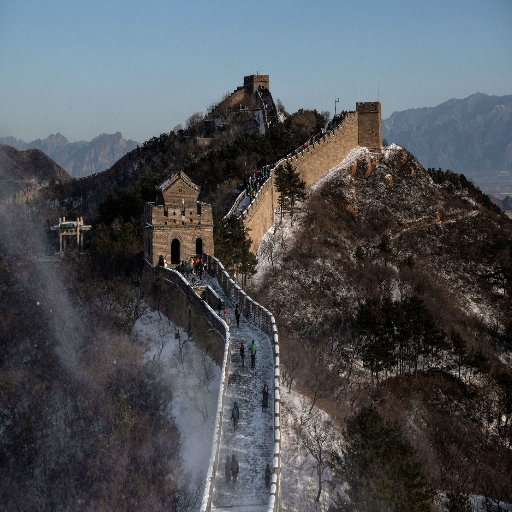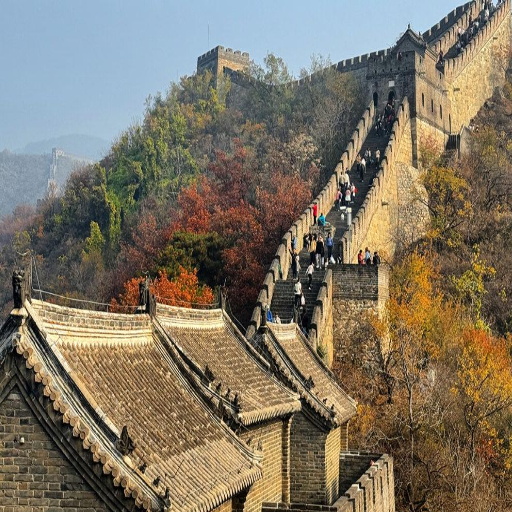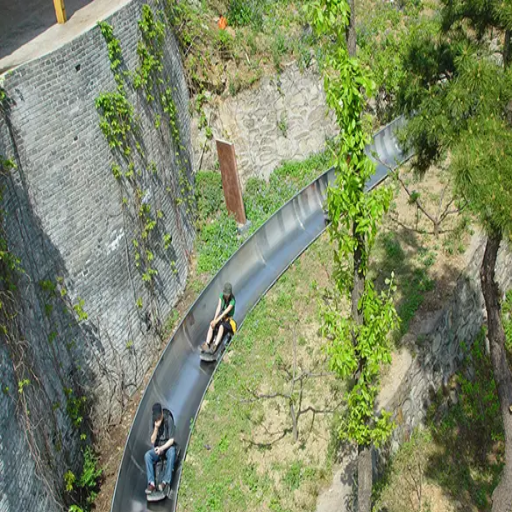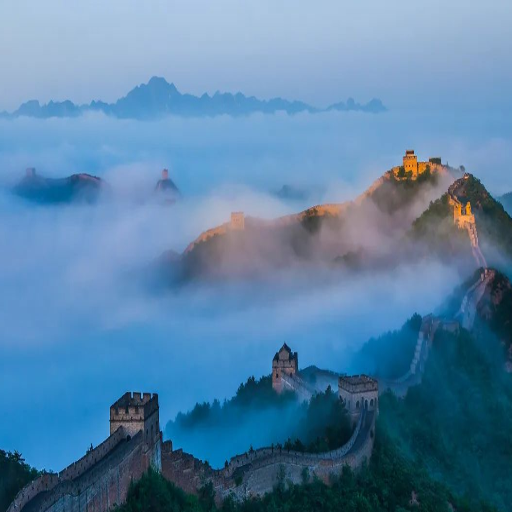Starting from its construction in the seventh century B.C. to the Ming Dynasty, the Great Wall of China portrays the curiosity and craftsmanship of the Chinese people. It still manages to fundamentally sculpt different perspectives and views of people who travel to China for tourism. Traveling to Beijing for a tour, it doesn't matter what the season is. It is considered compulsory to visit the Great Wall. Considering its size and variation—even the most seasoned travelers will have chaos while the plan the perfect trip around The Great Wall. Luckily, that's where this guide comes in. From classroom walks to challenging mountain climbs, we will provide you with the best opportunities and offer something suited to your needs and preferences. This wall is great during snowfall and springtime, so those areas are particularly highlighted throughout our guide. Get ready to uncover practical tips, seasonal highlights, and exclusive insights to make your Great Wall experience unforgettable.
What Are the Best Sections of the Great Wall to Visit from Beijing?

Why Choose the Mutianyu Great Wall?
The Great Wall of China's Mutianyu section is famous for its historical importance, as well as the beauty that surrounds it, and its easy accessibility, making it a good choice for all tourists. This section was built between 550 and 577 AD during the Qi Dynasty and then rebuilt in the Ming Dynasty, and is one of the best-preserved parts of the Wall. It has 23 watchtowers and stretches for 2.5 miles (4 kilometers), allowing visitors to appreciate the unique architecture.
Mutianyu is also known for its beautiful views. Surrounded by woods and mountains, the Mutianyu section offers stunning views in both fall and spring. Unlike other parts of the Great Wall of China, this area is not very crowded, so people who want a quiet experience can visit here.
The area also boasts modern amenities for travelers' convenience. Mutianyu provides well-maintained paths, a cable car, and a toboggan ride for a fun descent, making the site suitable for travelers of all ages and fitness levels. Located about 45 miles (70 kilometers) from Beijing, this section can be easily reached by private transport or organized tours, making it ideal for a day trip from the city. The Mutianyu Great Wall is a significant landmark that offers a beautiful glimpse into China's history, whether you're a photography lover, an adventurer, or a history enthusiast.
What Makes Badaling the Most Popular Section?
Despite being the most well-known, Badaling is also the most visited and best-conserved section of the Great Wall of China. The popularity can be explained by combining its historical significance, mainly stemming from its ease of access, alongside an array of tourist services. This section has long been considered one of China’s prides and heritage, as it was the first to be opened to the public in 1957. Badaling was a Key strategic military point in ancient times, and it still offers a genuine view of the impressive defensive architecture from the Ming Dynasty.
Families can visit the Badaling section of the Great Wall because it is suitable for all ages. It is situated 43 miles from Beijing, which is easily accessible by train, bus, or car. Badaling is not only historical, but it also offers breathtaking scenic views that broaden the horizon. It has various forms of entertainment, such as cable cars, restaurants, and visitor centers, ensuring that people of all mobility levels will be entertained. Badaling has hosted a multitude of world leaders over the years, making it well-known globally.
How Do the Views of the Great Wall Vary by Section?
By section, each part of the Great Wall has its unique view of what stands around it and its historical significance. For example, the Mutianyu section offers exquisite views of forests in spring and autumn, as the leaves turn red and golden. This area has fewer people compared to other sections, making it a perfect spot for those seeking peace in nature. On the other hand, the Jinshanling section features dramatic, rugged landscapes with both restored and original sections of the wall, offering a glimpse of ancient craftsmanship.
Adventurous people will enjoy the steep rises and breathtaking views of Simatai’s reservoir and surrounding hills. It gets even better during the night. Those looking for the Jiankou section will surely not be disappointed, as they will find extreme cliffs and zigzagging paths in the mountains, a dream come true for both seasoned hikers and photographers. Every section has its unique touch of natural beauty and historical architecture, making it possible for everyone to find a view that appeals to their liking.
What Should I Expect on a Great Wall Tour from Beijing?

How Does One Sample Itinerary Appear?
An average Great Wall tour from Beijing starts early, with a driver picking up clients from their hotels or a centralized bus station. Most tours center around well-known sections of the wall, like Mutianyu, which is famous for its unscathed beauty and preservation. It’s also a popular area of the wall because it has something for all fitness levels - steep climbs for the adventurous, and cable cars for those less physically inclined.
Scenic views from the cable cars and winding photogenic paths have led to most itineraries allotting 2-3 hours of exploration time. Depending on the tour, there may be culinary interludes at local restaurants serving authentic Chinese food, or cultural excursions to the Ming Tombs or crafts workshops. Most will find themselves back in Beijing by mid-afternoon, having been given a quintessential Great Wall experience that enables them to enjoy the city’s nightlife.
Are There Tours for The Great Wall?
There are countless tours of the Great Wall of China. Depending on operators, there are multi-day tours and even half-day excursions for those with tight schedules. Badaling, Mutianyu, and Jinshanling are some popular areas with their unique perspectives and varying levels of difficulty, which makes many great tours even better.
Tours excluding transport are almost unheard of; clients are fetched right from their hotels in central Beijing to the Wall through bus or minivan. For non-Chinese tourists, there's no need to worry about tour guides, as most speak multiple languages. In addition to tours, stargazing far from the Wall, hikes in quiet areas, and cable car rides add unique attractions. Depending on the level of service and amenities, prices can vary greatly. From budgeted group tours to privately enjoyed luxury experiences, everyone is catered to. Travelers looking to enjoy the gorgeous historical landmark won’t be disappointed, as there is a plethora of options to choose from.
What Types of Transportation Are There For a Day Trip?
When planning a day trip, the transport options available differ depending on a traveler's budget, time frame, and preferences. For ease and comfort while traveling, organized bus tours are popular among visitors, as they usually include round-trip transportation, entry tickets, and guided tours. Often, these tours start from central locations in the city, providing easy access for travelers new to the city.
On the other hand, traveling using public transport can be a flexible and cheap option. Most locations can be reached by train and bus, which have their schedules for departures and allow for independent exploration. For instance, trains tend to be faster and have comfortable, modern seats with ample facilities. Intercity buses are also another standard and cheap option.
For more independent travelers, having a car rental or hiring a private chauffeur allows for unique control over timing, stops, and routes. These services, along with ride-hailing apps, are gaining popularity among travelers due to the convenience of being picked up and dropped off at their desired location, even if it is a little pricier.
Finally, some intrepid travelers might choose cycling if the destination is reasonably close and has biking paths, combining transportation and exercise. No matter which option you choose, taking into account travel time, expenses, and personal convenience will make your trip far more pleasant.
What Activities Can I Enjoy While Visiting the Great Wall?

Can I Use a Cable Car to Access The Great Wall?
Sure, a cable car is available for riding on the Great Wall. Also, both Mutianyu and Badaling sections offer sufficient parking spaces making it easy to travel in by car. Cable cars are an integral part of tourist attractions nowadays, with most modern families using them as a quicker way to access landmarks rather than climbing them. Because of the wall's historic significance, those using it can easily view the wall's most famous parts along their route which assists greatly in climbing planning.
Some key features that must be mentioned are the view from the cable car and the slope chair lift, which offers both the cable path and the wall head bypass through Mount 14. Visitors are also encouraged to make trips to other oriental hills in China, as they also showcase some of the steepest parts of the wall. This way, everyone can enjoy a few days of riding through the wall, where everyone, during and after the trip, captures everyone's focus.
In the case of using cable cars, ticket purchase and their hours of operation require particular attention, together with the season’s weather. Sometimes, these services are suspended because of strong winds or maintenance work. Tickets are most often purchased at the entrance or sold online in advance and are priced differently depending on the section visited. The cable cars not only ease access to the Great Wall but also enable visitors to pay greater attention to appreciating the history and breathtaking views of this UNESCO World Heritage Site.
What Is the Toboggan Experience at Mutianyu?
This experience is one of a kind. Visitors have the chance to appreciate the beautiful Great Wall while sledding down in the west. This allows participants to glide on a small sled with handbrakes on a spiral, metallic, shell-shaped track. It’s located at the Mutianyu section of the Great Wall. With the unique route, guests can see an amazing, forested, hilly region to the north during their ride. The distance of the run is about 1580 meters (5184 feet).
Quite entertaining yet safe for everyone over the age of seven, the staff clearly explain how to use the toboggan before customers hop on. Like many things, it operates on a seasonal basis and, due to harsh weather conditions, is often closed during snow and rain for safety reasons. Customers have the option to buy a ride ticket separately or as part of a bundle deal with the gondola lift or ski lift chairs. The toboggan is an excellent combination of adventure and excitement, making the experience at Mutianyu Great Wall even more enjoyable.
What Other Experiences Are There For Visitors Apart From The Wall?
Not limited to the scenic sights of the Mutianyu Great Wall sections, customers can participate in various activities that make for a memorable experience. For example, people can take the opportunity to go on a hike in the less-explored parts of the wall and experience the serenity of nature, while also appreciating some of the finest views of the land. On top of this, many guided tours also include facts and stories about the wall’s history and its construction, which add value to the trip.
Along with providing convenience, access to the Great Wall via cable cars and chairlifts offers a breathtaking view of the structure as it stretches through the mountains. For those looking for excitement, the toboggan ride is a must-try, as it combines adventure with sightseeing. Tourists can also get involved in local cultural activities, such as those in the nearby village or calligraphy lessons, which display traditional lifestyles and regional dishes. These activities forgo the essence of history, culture, and adventure, creating an unforgettable visit for tourists of all ages.
What Are the Benefits of a Private Tour of the Great Wall?

How does it Enhance The Experience Of The Tour?
A private tour of the Great Wall offers a complete, enriching, and personalized experience of one of the world’s most significant landmarks. Private tours are unlike group tours, as one can customize their unfolding journey to their own pace, guaranteeing a personal touch. With a guide, one receives a comprehensive explanation of the historical connotations and the wall’s importance in ancient China, alongside fascinating engineering details that span thousands of miles.
Moreover, a customized tour includes more serene sections of the area, where you can enjoy the quiet beauty of nature free from the annoyances of the crowd. These lesser-known spots offer the best vantage points for ancient wonders, providing fantastic photo opportunities. Also, the Wall is Great, so magnificent in the eyes of the guest, as it is made to be comfy and convenient. A private wall tour ensures that all your needs, whether an adventurous hike, soaking in history, breathtaking views, or an enjoyable cultural experience, are met amicably. Lastly, transportation is provided, making the journey even easier.
What Custom Itineraries Can Be Created for a Private Tour?
With incredible flexibility, private tours can be tailored to a traveler's interests, preferences, and timeline. Whether you enjoy history, architecture, gastronomy, or nature, custom itineraries let you focus on what matters the most to you. For example, a history buff might appreciate an in-depth exploration of ancient landmarks with intricate passes to secured areas of famous historical sites. Conversely, culinary enthusiasts might enjoy a scoop of local cuisine in a dedicated gastronomic adventure that includes a trip to the local market, food tastings, and cooking workshops for regional dishes. Through private tours, these custom experiences are created, ensuring profound personal engagement with the itinerary.
Moreover, small groups or families can create custom itineraries to suit their specific needs. For instance, families traveling with young children can include stops at children’s attractions and museums with interactive exhibits, as well as breaks during playtime and naptime. Adventure enthusiasts may opt to focus on outdoor activities like hiking, exploring hidden caves, or booking exhilarating zip-line excursions. In addition, seasonal festivities, holidays, and festivals can be added to the itinerary to make it richer in culture. This framework not only simplifies logistical planning but also curates customized, meaningful experiences for the family while capturing the essence of their interests.
Private excursions are all-inclusive and led by professional guides who use vivid storytelling and explain tour facts in engaging ways, helping you understand the itinerary. Visitors are guaranteed the freedom to explore at their leisure and deviate from the plan, ensuring an incredible encounter and more spontaneous exploration of the area. Every traveler is presented with custom itineraries that boast of creativity, flexibility, and expertise in every detail of the travel, guaranteeing the most unforgettable trip.
Are Private Tours More Expensive - Is It Worth It?
When compared to the equivalent expenses of group travel, private tours may appear as a more premium expense. Still, for an individual who wishes to enjoy a unique experience, the benefits far outweigh the costs. Private tours offer unparalleled convenience, allowing every detail to be planned according to your interests, preferences, and schedule. Unlike group tours that tend to be time-consuming and packed, private tours free you entirely from the boredom of mindless priorities or inflexible plans.
Beyond the superb access to selected sites and undivided attention from experienced tour guides, a private tour is valuable because it transforms the way you experience travel. For instance, statistics show that travelers who choose to embark on private tours tend to report higher satisfaction rates due to the bespoke experiences and immersion in culture they receive. Furthermore, private tours tend to minimize travel fatigue as they don't require adjusting time schedules for large groups or making unnecessary stops.
In conclusion, the convenience offered through planning and enhanced interaction with the destination, alongside the richness of an unparalleled experience, makes the perceived additional upfront expense an invaluable investment for travelers seeking the best value and unforgettable memories.
What Are the Best Times to Visit the Great Wall of China?

How does the season influence the beauty of the Great Wall?
According to my travels, the border of China varies greatly in proportion to its scenery, depending on the season. Each of my visits to the Great Wall of China has been visually stimulating in its way. For example, in the spring, the scenery around the wall is painted with colorful flowers and a variety of greenery. It also has pleasant temperatures, which, coupled with blooming flowers, make the region all the more peaceful.
Days with sunshine offer magnificent views, especially in the summer. You can see both the Great Wall and the scenic landscape that surrounds it. The only downside is that the temperatures are a little warmer, which means that there are larger crowds during this time. I prefer to visit during the autumn. The combination of red, orange, and gold leaves that surround The Great Wall is stunning, with the addition of cooler temperatures.
The Winter season is colder but offers a unique type of charm. The Great Wall and its surroundings are often covered with snow, creating a peaceful and picturesque setting. The crowds are generally smaller, and the combination of white snow and the ancient walls' structures enhances the beauty of the Great Wall. In the end, for me and I think many others, the Great Wall is a sight to behold, and every time I visit, it feels like I'm looking at a giant painting.
When Are Crowds at Their Peaks?
The crowd levels at the Great Wall of China vary greatly depending on the year and which part of the Wall you plan on visiting. In my opinion, one of the major tourist seasons is spring and autumn, specifically from late April to early June and from September to early November. These months are noted for their pleasant weather and beautiful views, which attract many people to visit. Well-known sections such as Badaling and Mutianyu also tend to get very busy during this time, especially on weekends and holidays like Labor Day (May 1) and Golden Week in early October. Be prepared to navigate busy pathways and bustling viewpoints if you visit during this time.
On the other hand, mid-summer and winter periods are typically less busy but come with their issues. The summer months, particularly July and August, are characterized by high temperatures, intense humidity, and rain. If you can cope with the heat, though, you can find some quiet times in the early morning or late afternoon. In my case, I’d prefer the winter off-season, particularly from December to February, due to its quieter atmosphere and chilly winds. The Wall is spectacular in winter, especially when it's covered in snow, and provides a more relaxing experience.
Regardless of the season, some strategies can help avoid the peak periods. For example, I found the less-advertised tourist locations, such as Huanghuacheng or Jinshanling, to be calmer. If you go in the early morning or late afternoon, you're guaranteed peace, as most tours take place around mid-morning and late afternoon. Provided one plans their visit and chooses the optimal time, any day of the year is guaranteed to be astonishing.
When Is the Most Optimal Time to Take Pictures of the Great Wall?
In my experience, the most optimal time to take pictures of the Great Wall is during the golden hour, which is right after sunrise and right before sunset. This natural light is the most flattering, as it casts a gentle, warm glow on the Wall and reduces the presence of hard shadows. The intricate details of the bricks and the surrounding landscapes are enhanced by the angle of the light, creating great compositions. Mornings are tranquil due to the low number of people and the mist that sometimes shrouds the place, making the photos magical.
Every region-specific wall has its distinct charm, all waiting to be captured by a photographer at the right moment. Every season brings some prospects that enable any photographer to capture the best angles of the wall. Winter has always been my personal favorite because after a few snowflakes, the entire wall transforms into a dazzling white blanket, which looks breathtaking. Autumn is another season that looks incredible too; my favorite is the vibrant summer colors that bring life to the greenery on the wall, which looks phenomenal.
For other sections of the wall, like the Simatai section, with the right amount of dusk lighting, you can capture the right water shots. For the Mutianyu side, capturing the view early in the morning with the right amount of tourists is photographic bliss. No matter which section of the wall, with proper planning, utter relaxation, and, most importantly, peace of mind, capturing the wall will no longer be an issue.
Frequently Asked Questions (FAQs)
Q: What are the best great wall tours from Beijing?
A: The most notable Great Wall of China tours from Beijing usually include the popular sections of Badaling, Jinshanling, and Mutianyu. Each one has stunning views, hiker-friendly sections, and numerous watchtowers, and offers something unique. Depending on the requirements, there are even day tours, night tours, and layover tours which combine great wall sightseeing with other vital places in Beijing.
Q: Is cancellation available for the Great Wall tours?
A: Yes, for Great Wall tours, many operators offer cancellation policies, and their tour packages reflect these policies. It's best to review their policies for specific cancellation options, including, but not limited to, free cancellation within a particular period before the trip date.
Q: How can I book tickets for the Great Wall tours near Beijing?
A: Booking tickets for Great Wall tours near Beijing can be done through several online websites, travel agents, or directly with the tour operators. Make sure to check if there are new offers and compare the options presented to find the best deals.
Q: What is the best time of year to visit the Great Wall?
A: The ideal time to visit the Great Wall of China is in spring (April to June) and during fall (September to October), when the weather is pleasant and the sights are stunning. However, every season comes with a fresh perspective, like winter's enchanting snow-capped views or summer’s vibrant greenery.
Q: How far is the Great Wall from Beijing?
A: The distance from Beijing to the Great Wall changes according to the section of the wall you decide to visit. For instance, the Badaling section is around 70 kilometers out, while the Jinshanling section is about 130 kilometers from the city center. Depending on traffic and your mode of transportation, travel time can change significantly.
Q: Are there guided tours available for the Great Wall?
A: Absolutely, most Great Wall tours have a guide who adds tremendous value with their knowledge, covering the historical aspects, important landmarks, and details to make the experience seamless. Guides often increase the value of your trip by taking you to the best observation areas and some less accessible sites.
Q: Is it possible to see the Great Wall while I am in Beijing?
A: Yes! Several tour companies offer Great Wall tours as part of business class or layover services. These tours are designed to be informative and engaging within the layover time frame, so passengers can relax and enjoy sightseeing without worrying about missing their flights.
Q: What do you need to prepare for the Trip to the Great Wall?
A: The Great Wall is a full-day hike, so it's advisable to carry appropriate walking shoes, water, sunscreen, and a camera to capture the stunning scenery. You may want to consider shedding some clothing in the middle of the day since it may get warmer as the day progresses.
Q: Are there any guided tours offered after sunrise to the Great Wall?
A: Night tours are available for guests at the Great Wall. Particularly for the Badaling section, there is a sunset view of the wall. You're set to enjoy the sight of the wall fully illuminated at night, a rare moment unlike any other that will change your perception of the Wall, without the hustle and bustle of the crowd that comes during the day.


